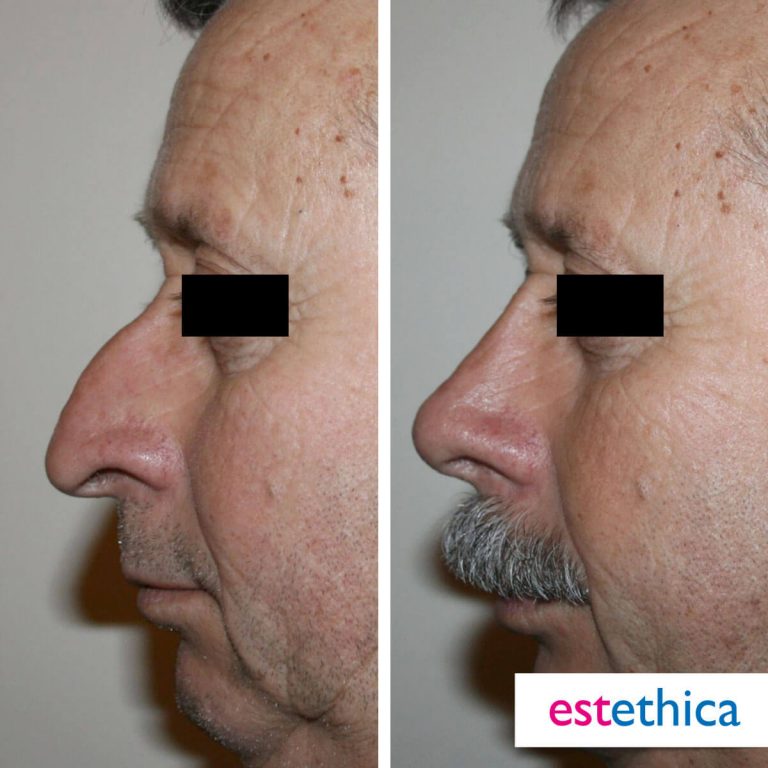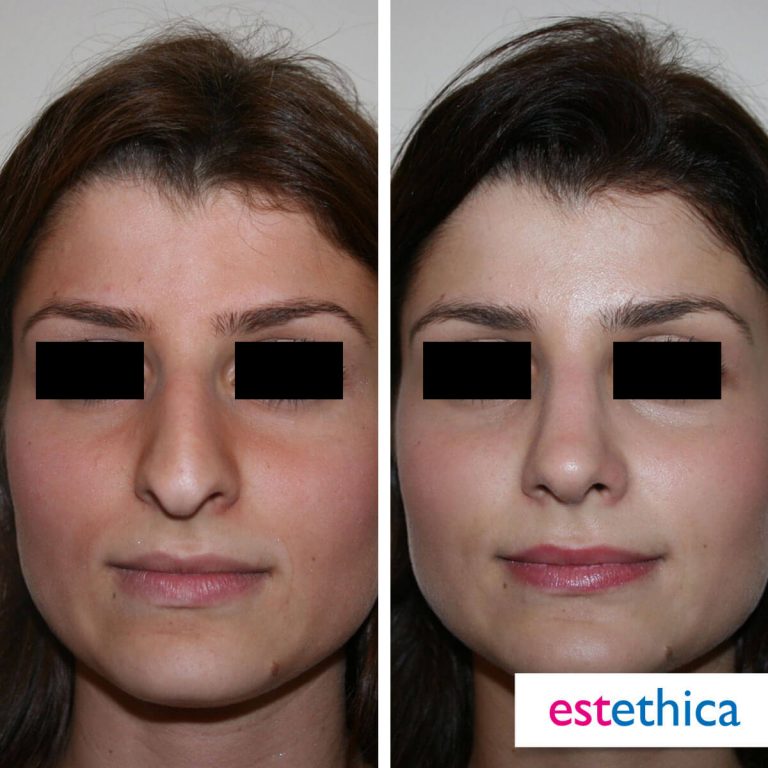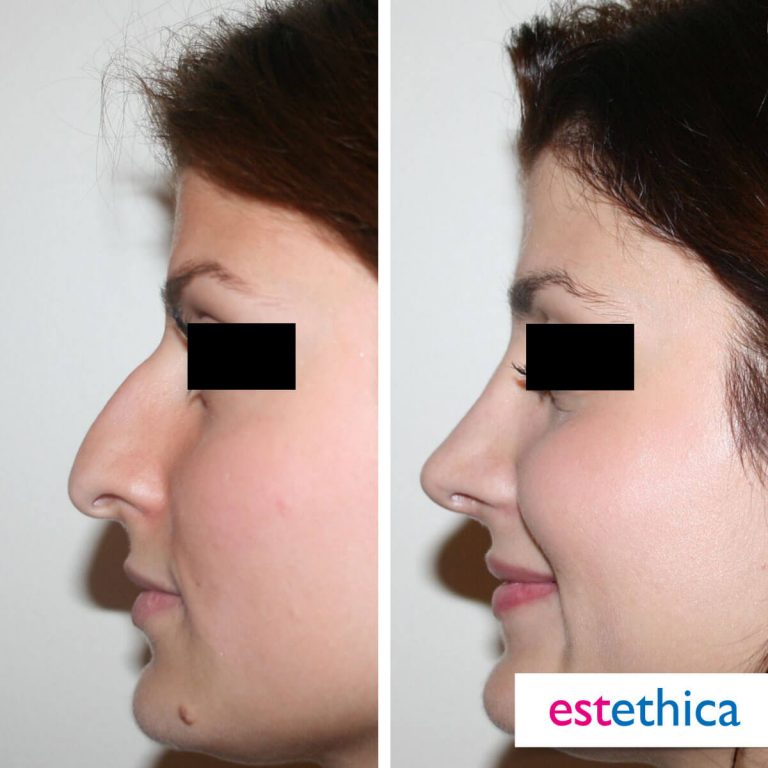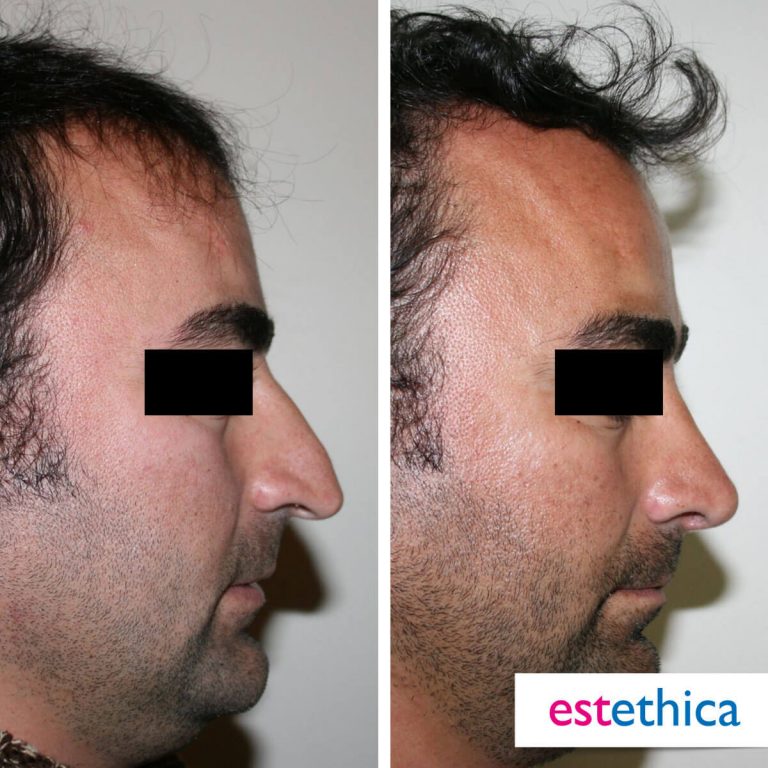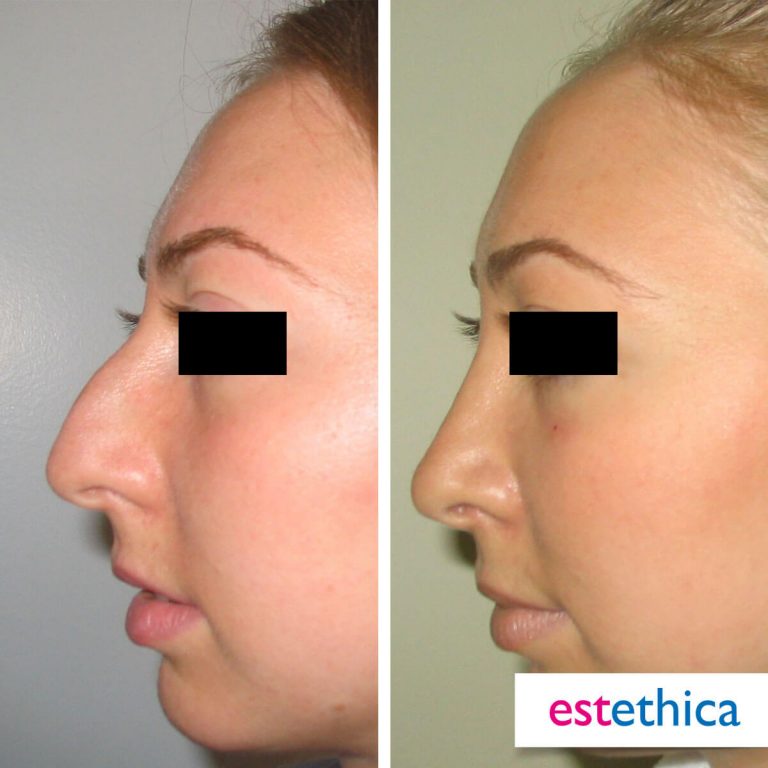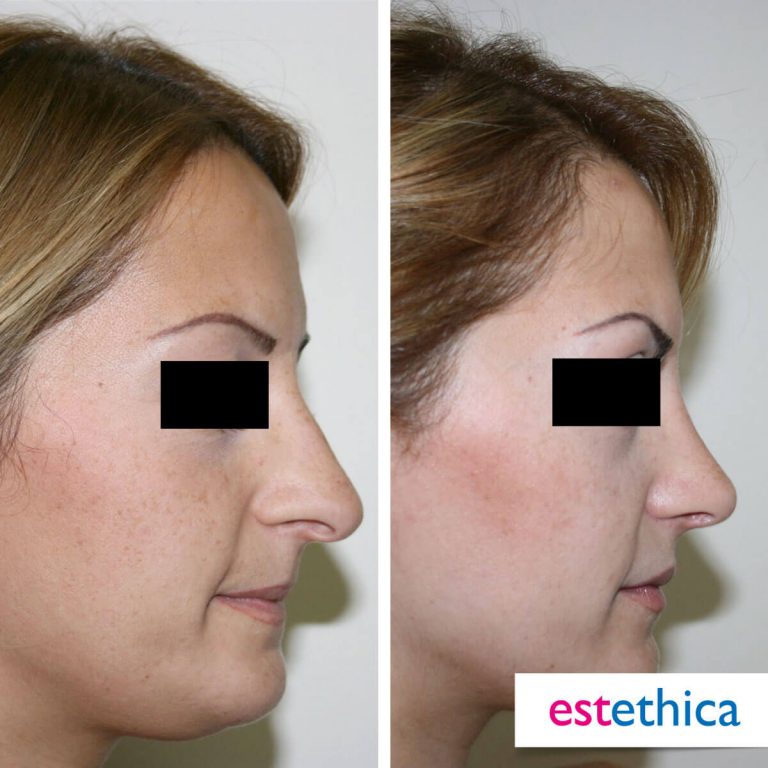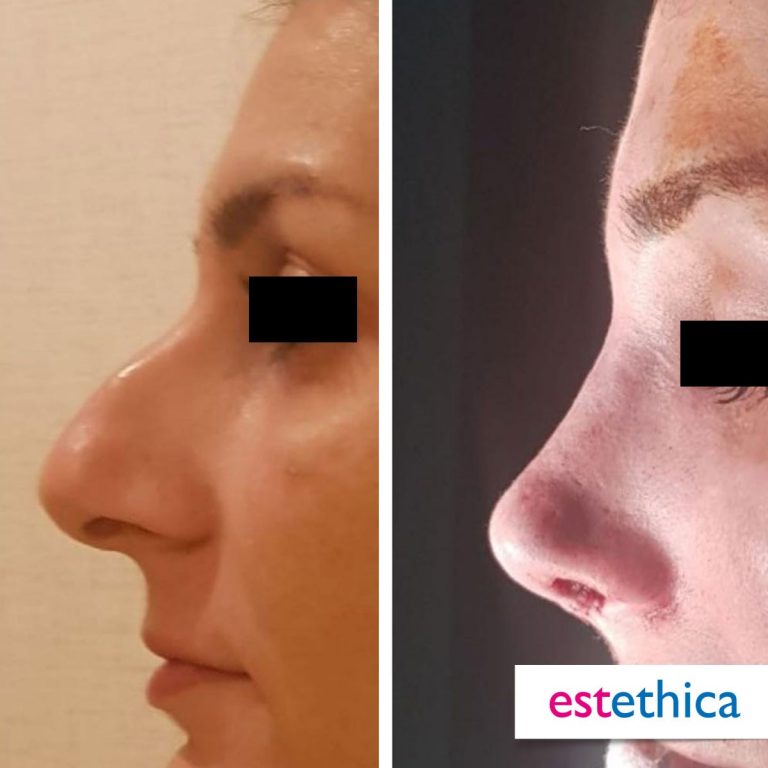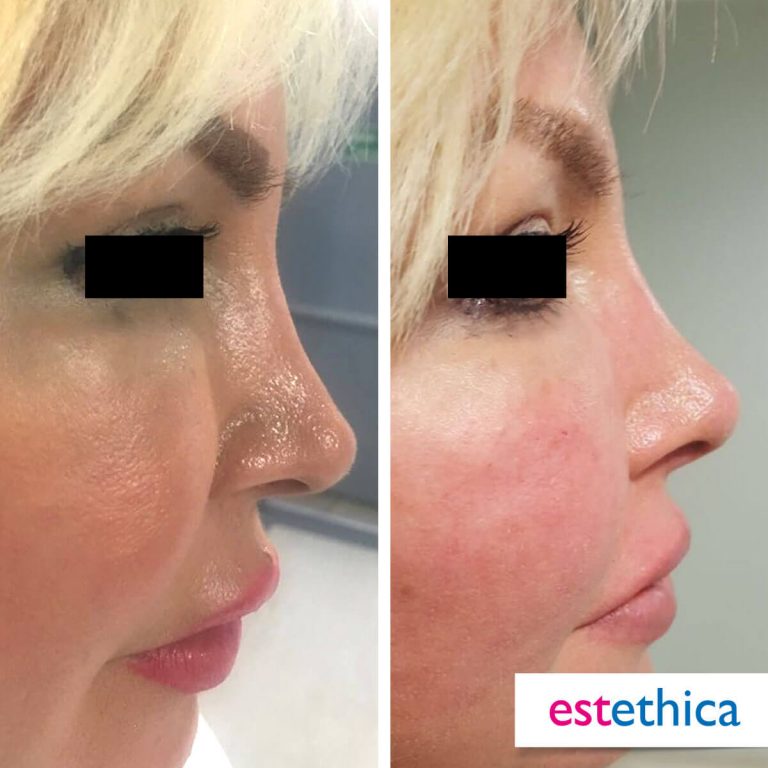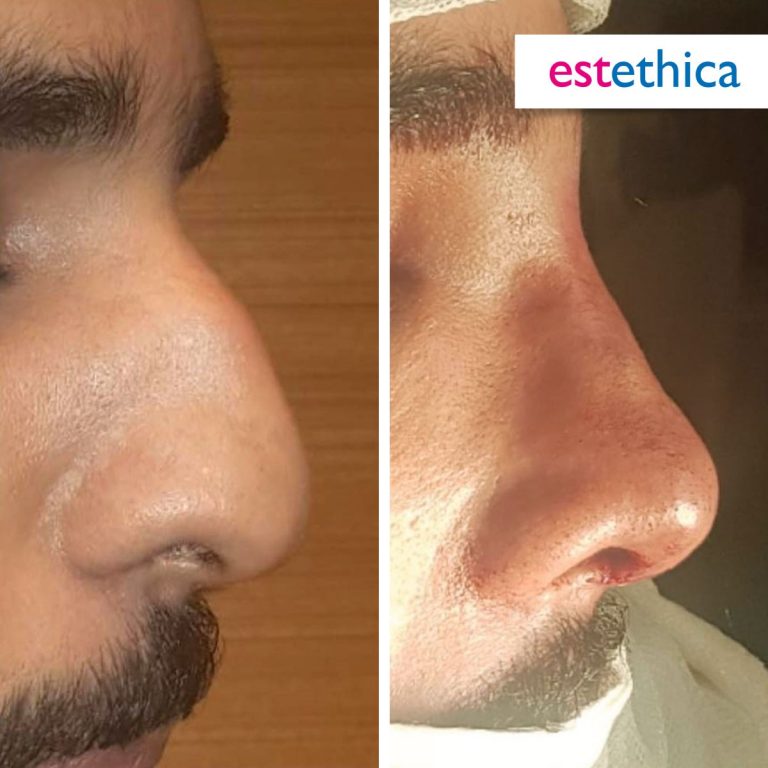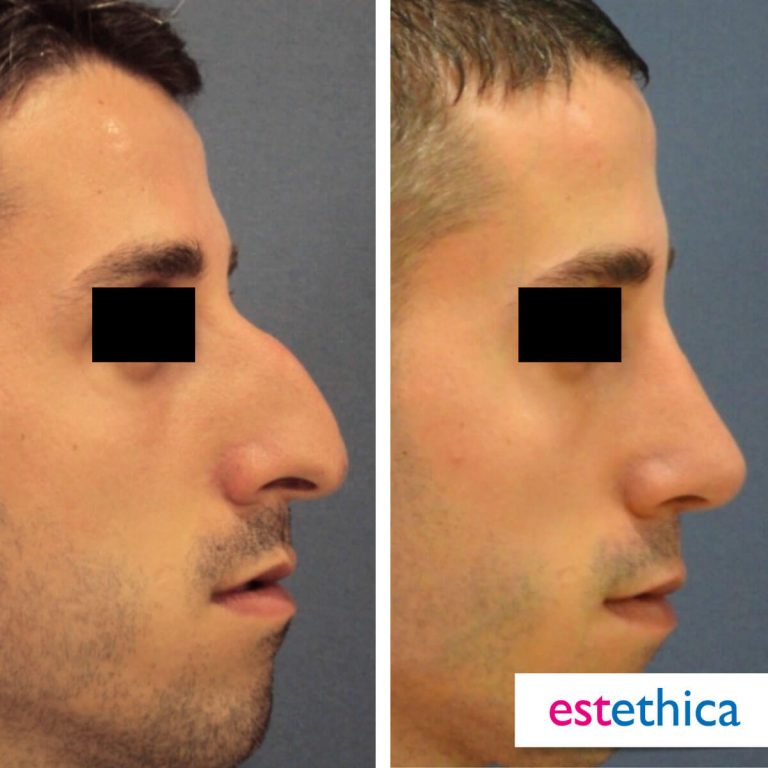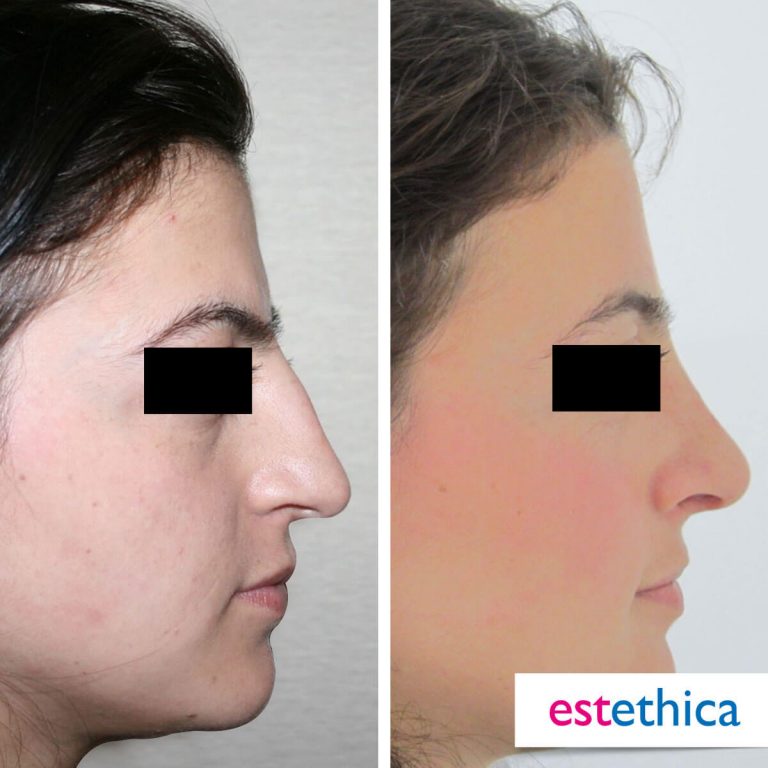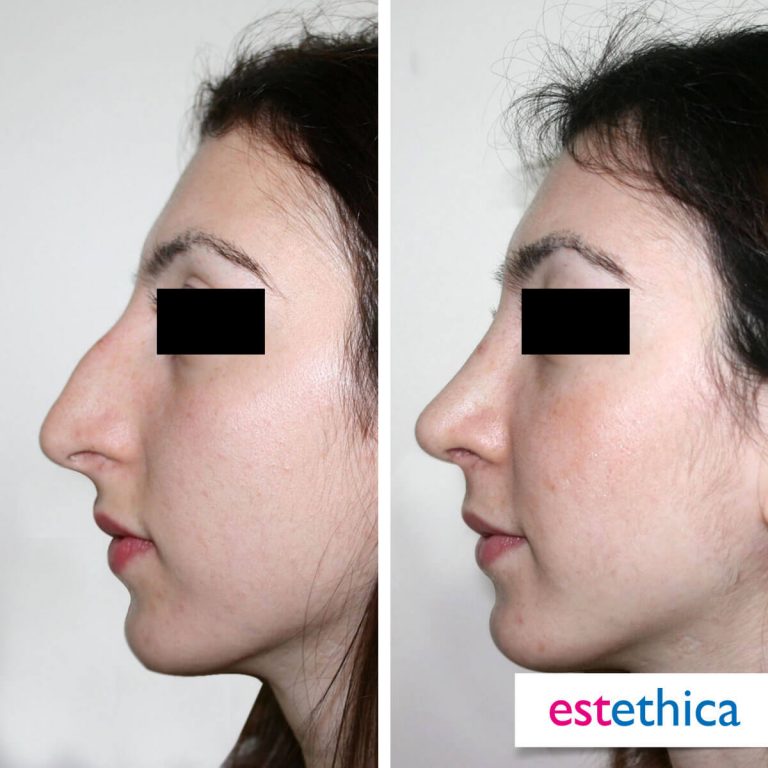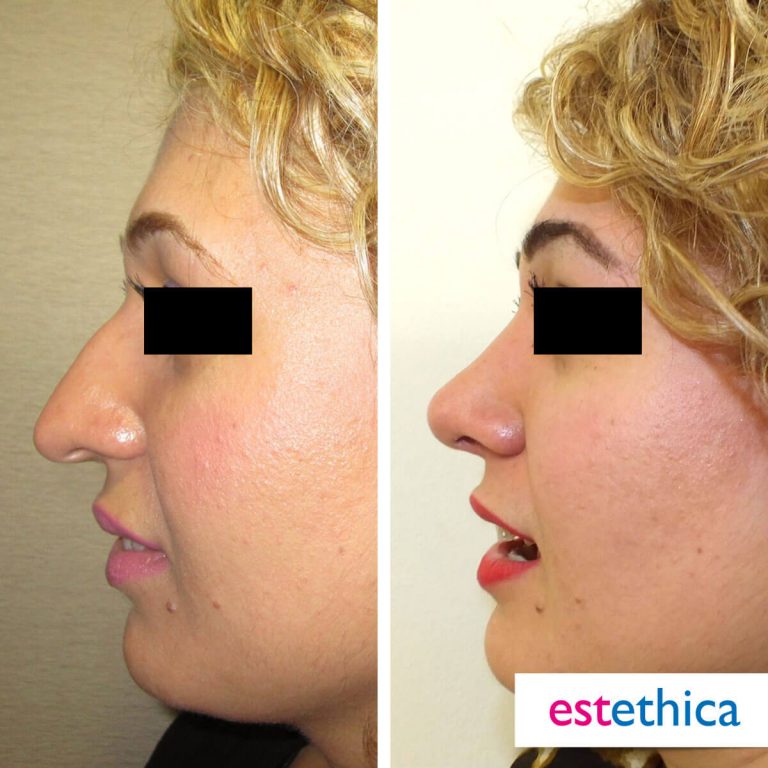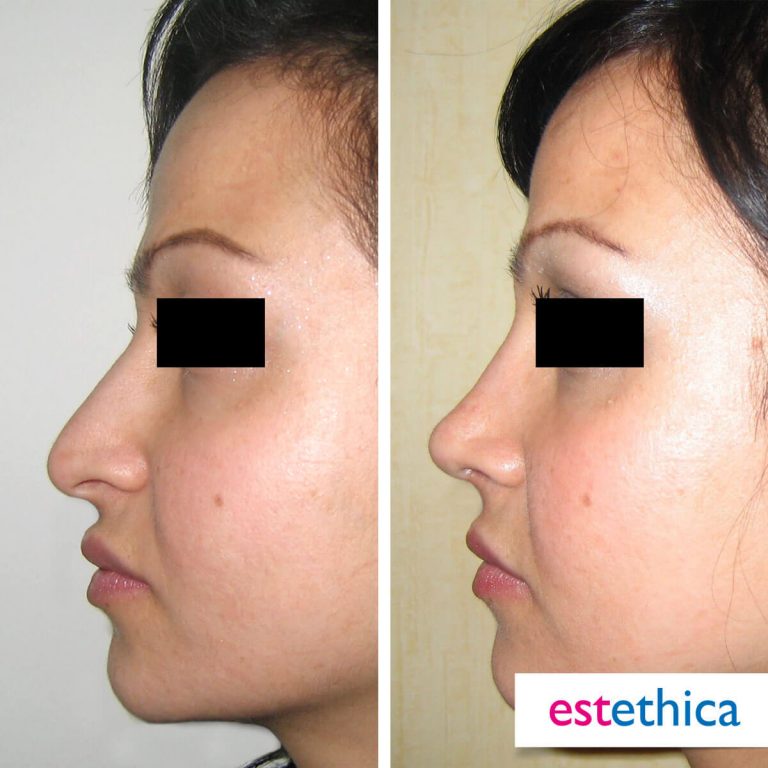Rhinoplasty
at estethica Istanbul
Operation - Rhinoplasty
Rhinoplasty, commonly known as a nose job, is a plastic surgery procedure for correcting and reconstructing the nose. There are two types of plastic surgery used – reconstructive surgery that restores the form and functions of the nose and cosmetic surgery that improves the appearance of the nose
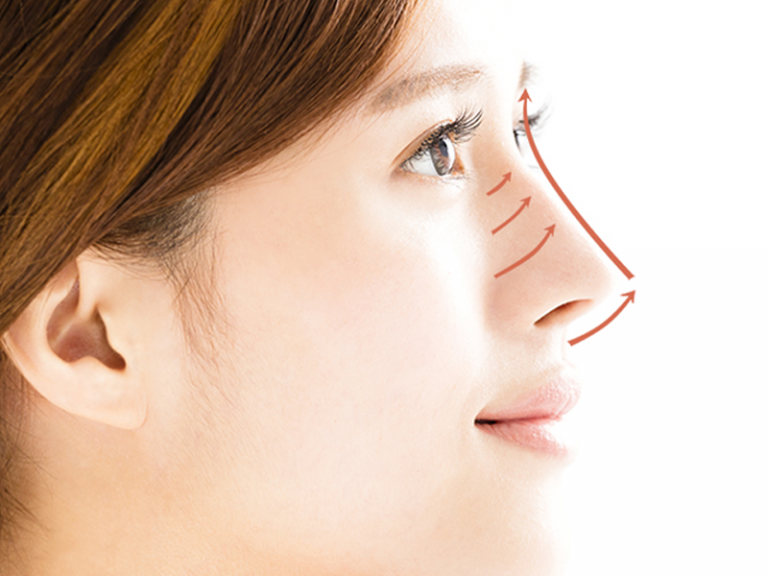
Why is it important for a nose to have an aesthetically pleasing appearance?
- The nose is an organ found on the center of the face which gives it its three-dimensionality and which highly affects the aesthetic appearance of the face
- The ideal shape of the nose differs just like everyone’s face shape does
- The most important criteria defining the aesthetic appearance of the nose are symmetry, proportionality of its parts and harmony with facial lines
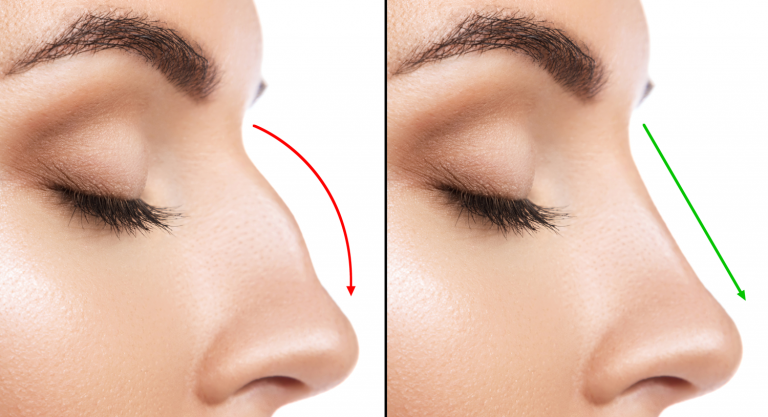
Symmetry
Is the most important of the criteria sought for in a nose’s aesthetic appearance. The right half of the nose has to be symmetrical with the left half when
looked at from across. Crooks in the nose as well as deviations to either the left or right, usually caused by trauma, ruin the nose’s symmetrical appearance.
Proportionality
The width of the nose’s wings should be as wide as the distance between the two eyes. The tip of the nose shouldn’t be raised to an extent that allows the inner part of the nostrils to be seen or low to an extent that completely closes them off from being seen. The ideal angle between the tip of the nose and the upper lip is agreed to be 90-95° for men and 95-105° for women.
Harmony
The nose being harmonious with facial lines in a way that supports the face’s aesthetic
appearance is another important criterion. When ideal, the ratio between the width of the nose and the width of the mouth as well as the ratio between the length and width of the nose give a natural appearance that contributes to the face’s golden ratio.
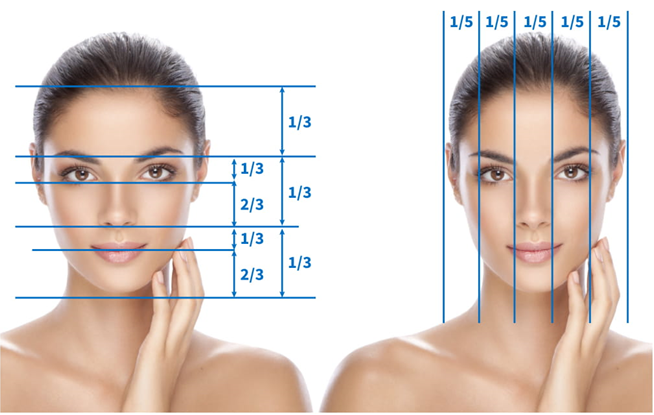
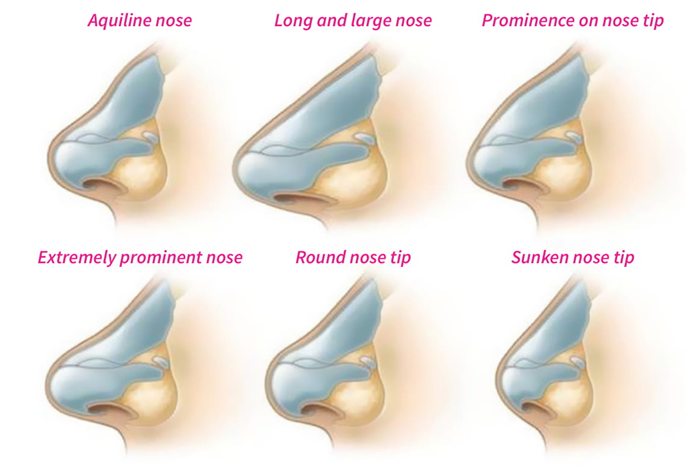
What is the nasal aesthetics operation?
The nasal aesthetics operation is an operation where the structure of the nasal bone and cartilage is reshaped and disharmony between the nose and facial lines is corrected.
Performed to:
- remove nasal deformities
- change the shape of the nasal bone or tip
- make the nose smaller or larger
- make the nostrils smaller
- change the angle between the nasal bridge and the forehead or the tip of the nose and the upper lip
- remove deformities such as growing nasal flesh (concha), bent nose bones (septal deviation) and other
- structures that should not be on a normal nose (polyps) that make breathing difficult.
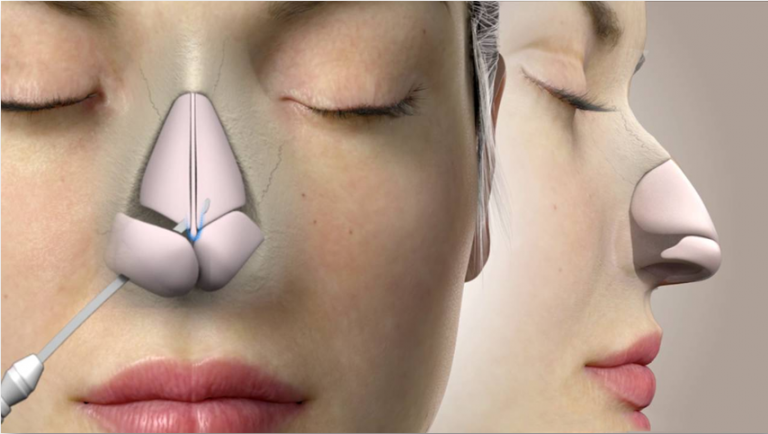
Rhinoplasty at estethica
Operations performed at esthetica aim for a nose that is in harmony with other parts of the face, has the right proportions, doesn’t have any surgical scarring, has an aesthetic, elegant and natural appearance and through which it is easy to breathe.
A ‘personal design unique for each nose’ is performed by determining the ideal nasal structure for each of our patients by taking measurements at specific points of the face before and during the operation as each patient’s nose shape, deformations and requirements are different. When standard surgical techniques are used instead of a personal design unique for each nose, the result may be an unnatural appearance that has clearly undergone a nasal aesthetics operation.
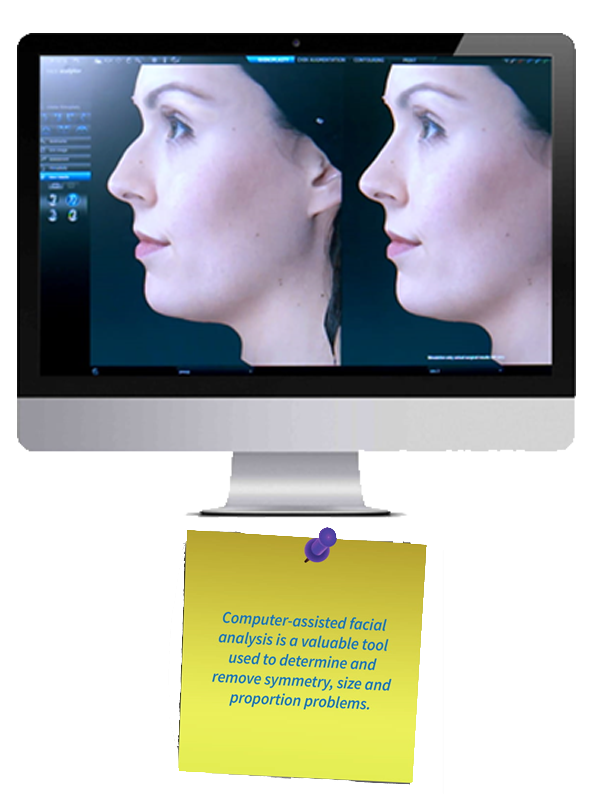
How it is done?
Step 1 - Anesthesia
Medications are administered for your comfort during the surgical procedures. General anesthesia.

Step 2 – The incision
- Through these incisions, the skin that covers the nasal bones and cartilages is gently raised, allowing access to reshape the structure of the nose
- An overly large nose may be reduced by removing bone or cartilage. Sometimes surgery of the nose may require the addition of cartilage grafts
- Most commonly, cartilage from the septum, the partition in the middle of the nose, is used for this purpose. Occasionally cartilage from the ear or rarely a section of rib cartilage can be used
- If the septum is deviated, it can be straightened and the projections inside the nose reduced to improve breathing
- Once the underlying structure of the nose is sculpted to the desired shape, nasal skin and tissue is rewrapped and incisions are closed
- Additional incisions may be placed in the natural creases of the nostrils to alter their size
Rhinoplasty is performed either using a closed procedure, where incisions are hidden inside the nose, or an open procedure, where an incision is made across the columella, the narrow strip of tissue that separates the nostrils.
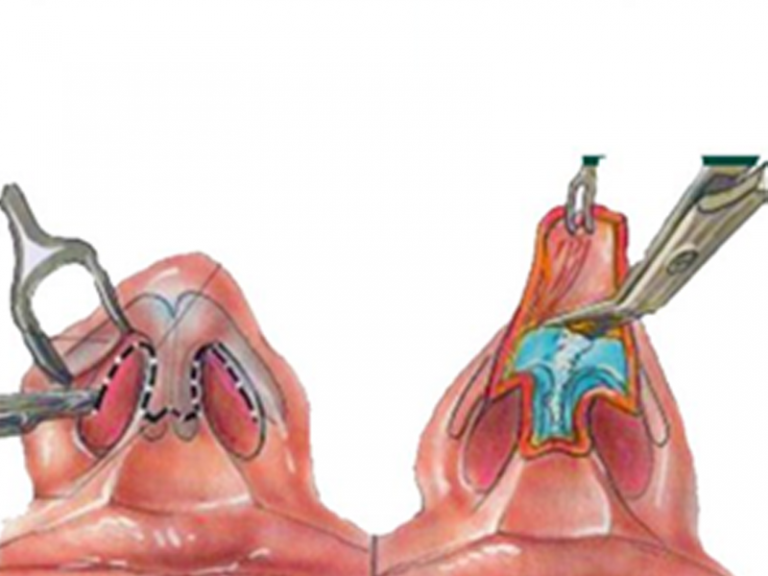
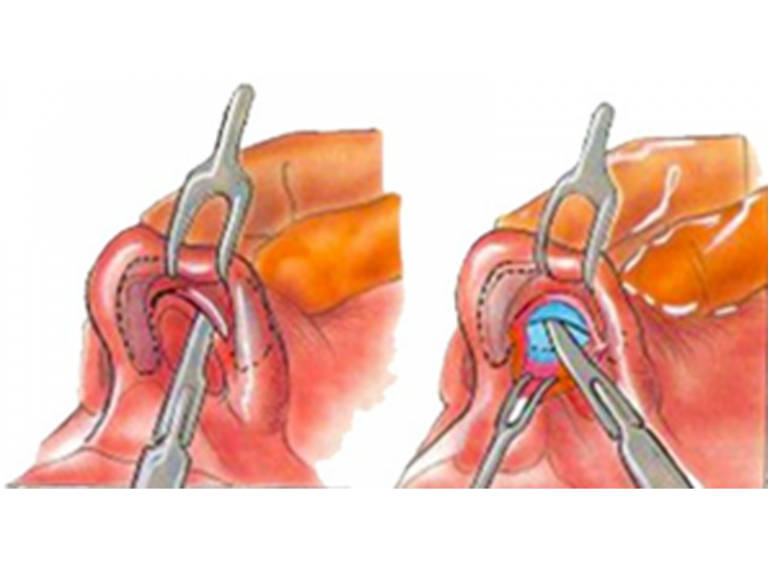
Step 3 – Recovery
The post-operative process, which varies according to the type of Rhinoplasty process, takes about 7 days to 15 days and includes:
- The possibility of placing nasal silicone implant for 3-4 days
- Place an nasal splint
- Use nasal bandage
- The interval to resume social and professional life depends on the duration of the external bandage and the potential for bumps on the eyelids and cheeks, whose size varies from person to person
- The nose remains fragile for a month, avoiding any shock or violent movements (Taking out mucus violently, sports …)
- When the bandage is removed, swelling may appear on the nose, which may disappear with medical treatment
- The surgical thread remains, because it is placed inside the nose, as it dissolves on its own
Before and After
